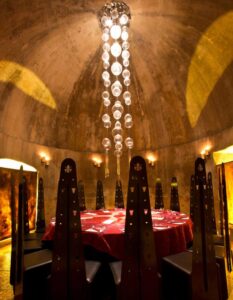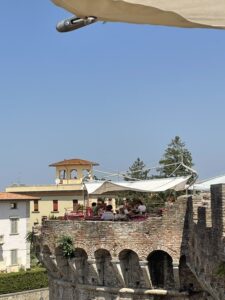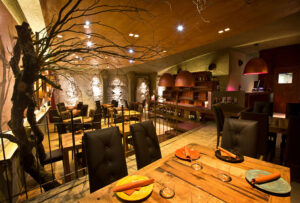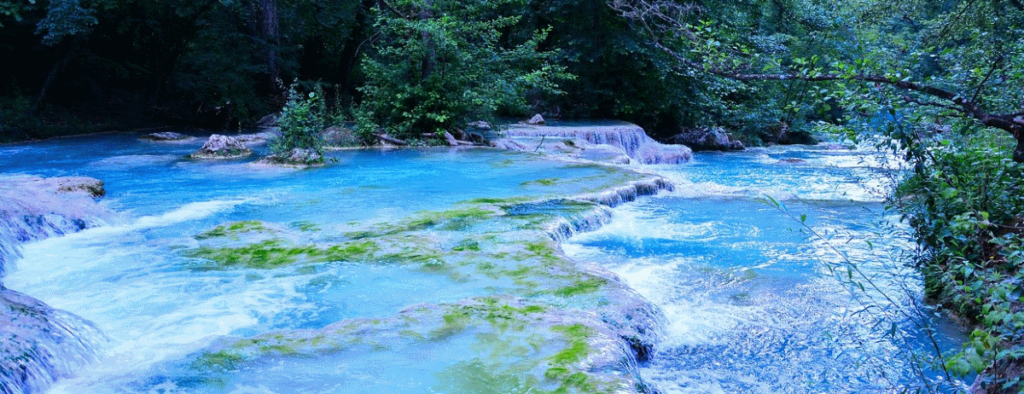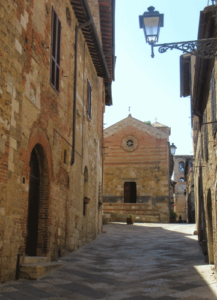
Few people know that Colle Val d’Elsa, presumably was the source of inspiration for one of the most famous characters of “literature” for children in Italy and among the most popular in the world (12th position among the most popular books in the world) ” The adventures of Pinocchio ”. Although it is not yet certain, that Collodi’s Pinocchio was born in Colle Val d’Elsa, we know with certainty that Carlo Lorenzini, aka Collodi, spent 5 years here where he studied at the bishop’s seminary in Piazza del Duomo in Colle Alta. According to the most reliable reconstructions made over the years, led by the teacher and historian from Colle Meris Mezzedemi, it seems that in the ancient part of Colle (Alta) there was a lot of Source of medieval origin that one Costa called at the time “del Pinocchio “and that the father of the illustrious” novella “, traveling that stretch of road daily to reach Piazza del Duomo where he studied, drew inspiration for his most famous character. So Colle di Val d’Elsa, in addition to court dignitaries, painters, architects, sculptors and many other talented characters, also counts “sources” of literary inspirations among the most successful in the Italian panorama of the genre, without forgetting the setting of the novel by Carlo Cassola “La ragazza di Bube” in Colle. A land full of surprises that hosts Colle Val d’Elsa and that does not betray the expectations of lovers of culture, history and art, but also of lovers of wellness and nature. So not only the alchemy of crystalthat have made Colle an international center for centuries, the suggestive tower-houses that make the skyline of the city and the many other historical-artistic and artistic pearls so uniquecontemporary art scattered here and there in the city, there are also unique natural and landscape riches. For lovers of free thermalism, a little “wild” and authentic, there are the wonderful thermal baths of the Caldane.
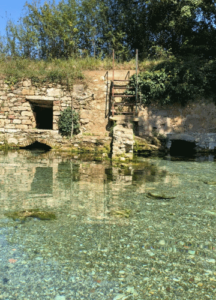
A short distance from Colle Bassa, in the locality of Gracciano, are the Caldane baths, already known and exploited first by the Etruscans and later by the Romans. It is thermal water with important therapeutic properties, rich in calcium salts that form a suggestive and particular mirror of clear waters surrounded by green woods that have almost swallowed up some stony ruins that in the past were in strong activity thanks to the exploitation of the water with attached mills. A sort of natural swimming pool spread over two “basins” immersed in the lush surrounding Tuscan countryside. For all those who prefer to experience a unique nature trail rich in biodiversity, there is Sentierelsa.
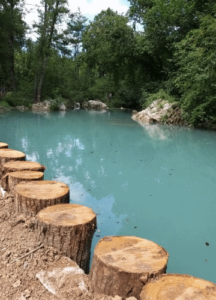
It is an equipped route of about 4 kilometers that runs along the river Elsa and which crosses a suggestive protected area. Spectacular and unique waterfalls caves with animal profiles can be reached through an equipped path full of steps, railings and fences in perfect Tibetan style, also obtained between rocky walls that open onto breathtaking scenery. The particular climatic-environmental conditions have made it possible to make singular flora and botanical species coexist with a large fish fauna in this extraordinary environment. This route, created in the Alta Valdelsa River Park, is an ideal place for trekking, relaxation and going slowly, a place to catch your breath and enjoy all the naturalistic beauties to experience alone or with your family and if it gets too hot with the possibility of taking a dip in the Elsa river. Certainly less naturalistic, but of undisputed historical and cultural interest there is also a path that connects to the more famous Via Francigena that crosses the ancient heart of Colle Val d’Elsa (Colle Alta). It is an ancient medieval route that crosses the upper part of Colle, already mentioned by the Archbishop Sigeric of Canterbury when he described the route that later became the current Via Francigena. We could define it as an alternative or parallel route and in some sections, it seems superimposed, on the official (mapped) route of the Via Francigena. In support of this theory, which is confirmed in some papers and studies conducted in the past and recently reworked, but without reaching certain conclusions, there is a tangible road brought to light with targeted and non-invasive restorations that is found inside a Restaurant in the oldest part of the city (Colle Alta).
Advice box
The restaurant is called “Portanova” and is located inside the 2 towers placed in defense of Porta Nova (Volterrana), a prefect example of Renaissance military architecture whose project is commonly attributed to Giuliano da Sangallo. Among the internal rooms of the restaurant, with curious niches created inside the 2 towers where you can eat, there is this unique find, positioned slightly above the main room furnished with elegance and modernity. In fact, three tables in this large internal room are positioned above the historic route of the Via Francigena, brought to light perfectly enough to bring out in all its beauty the trachytic stone smoothed by time. However, during the summer season, the Hosteria Portanova welcomes its customers above the two bastions from which you can enjoy a suggestive view and where you can taste the Chef’s gastronomic fantasies Lorenzo Somigli, who proposes in his seasonal menus with enthusiasm and innovation without giving up the typical traditional dishes. Then in the evening everything becomes more magical, with the complicity of the night and the lighting design designed for the location, for unique and unforgettable evenings.
